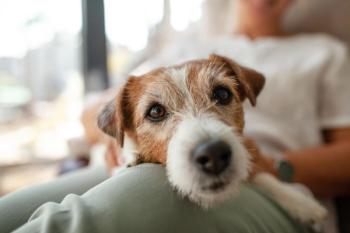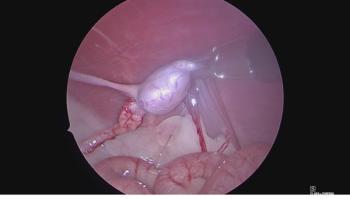
|Articles|October 1, 2009
Delivering supplemental oxygen to dogs and cats: Photos 1A and 1B
Photos 1A and 1B: A nasal cannula is inserted and fixed in place by placing skin staples into the nose band made of adhesive tape. The oxygen tubing Y section "slides" snug behind the head.
Advertisement
A nasal cannula is inserted and fixed in place by placing skin staples into the nose band made of adhesive tape. The oxygen tubing Y section "slides" snug behing the head.
More in this package:
Advertisement
Newsletter
From exam room tips to practice management insights, get trusted veterinary news delivered straight to your inbox—subscribe to dvm360.
Advertisement
Advertisement
Advertisement




